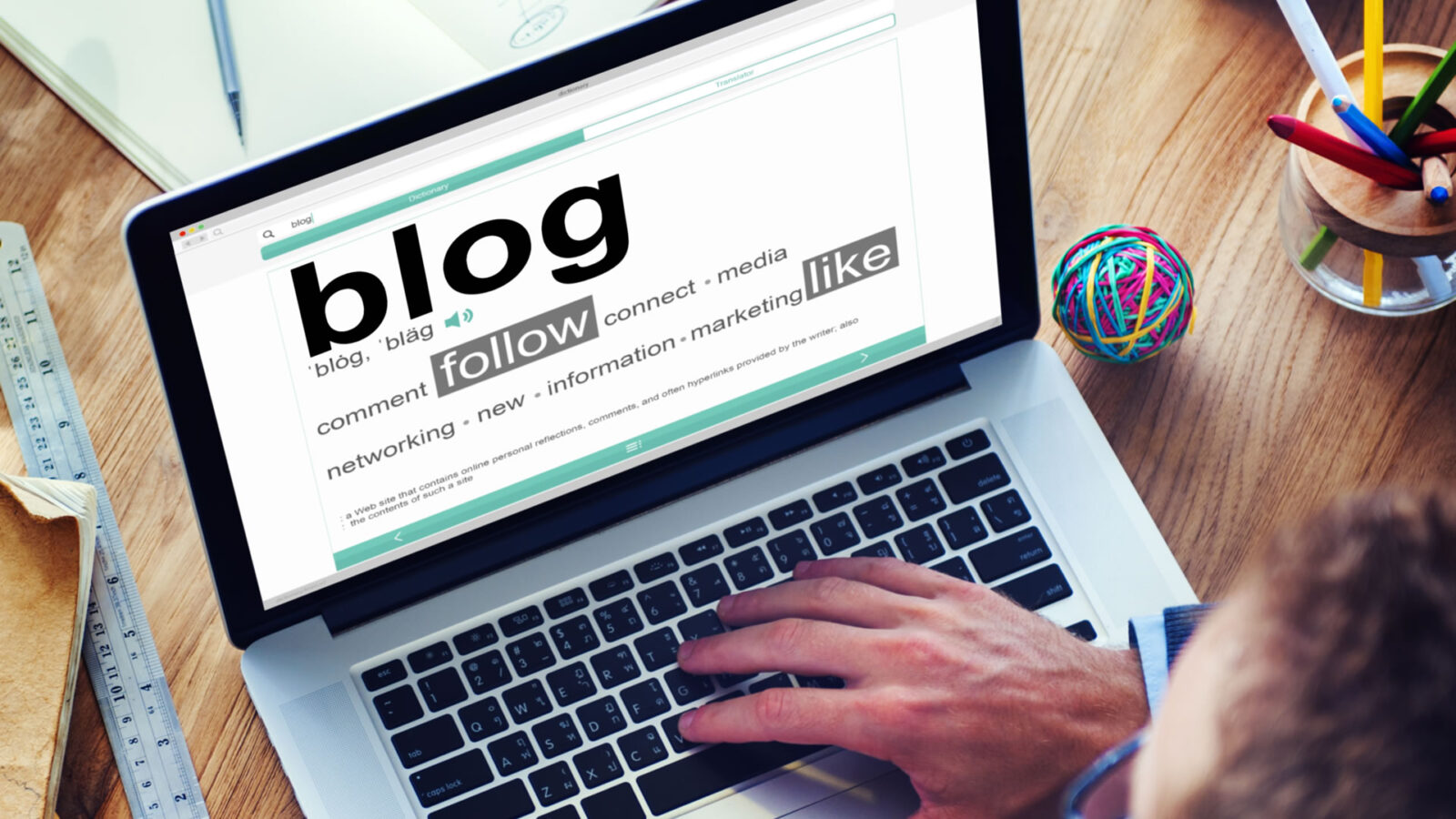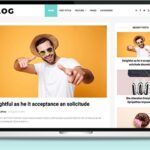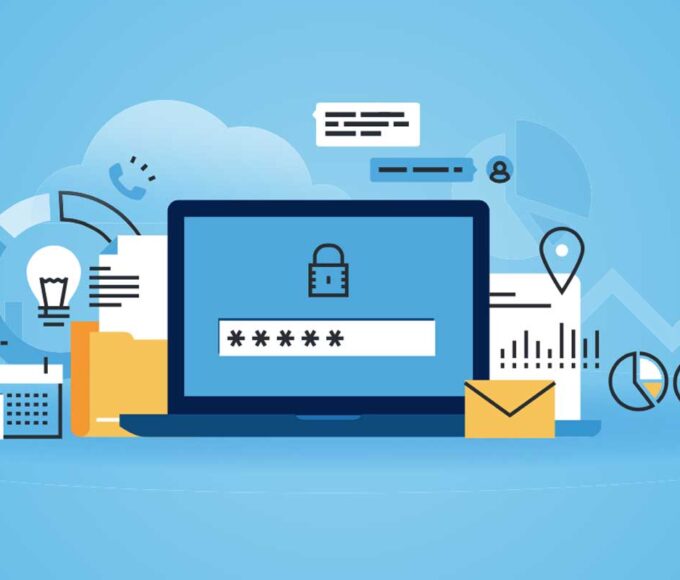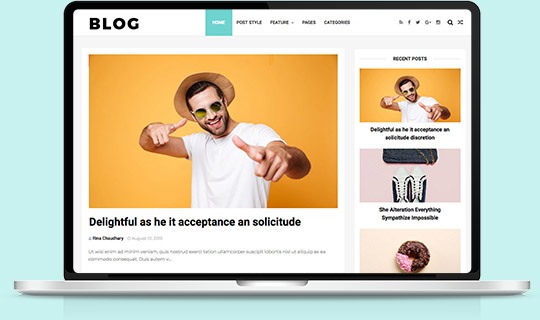Introduction
In today’s digital age, blogging has emerged as a powerful platform for individuals and businesses to express their thoughts, share knowledge, and connect with others. One of the easiest and most accessible platforms for beginners is Blogger, owned by Google. This article serves as a comprehensive guide to setting up your first blog on Blogger, covering everything from initial setup to blog promotion and maintenance. Whether you’re a student, job seeker, or a tech enthusiast, this guide will equip you with the knowledge to start your blogging journey effectively.
Why Choose Blogger?
Blogger is a free, user-friendly platform that offers a range of features suitable for both novice and experienced bloggers. Some reasons to choose Blogger include its integration with Google services, simplicity, and availability of customizable templates. Additionally, as a Google product, it provides reliable hosting, security features, and seamless access to tools like Google Analytics for tracking blog performance.
Moreover, Blogger allows users to start a blog without requiring extensive technical skills. Its straightforward interface makes it easy to navigate, enabling you to focus on content creation rather than dealing with complicated software. This emphasis on accessibility makes it an ideal choice for students and individuals looking to establish an online presence quickly.
How to Index Blogger Post in Google Search Console?
Getting Started
Creating a Google Account
The first step to creating your blog on Blogger is to have a Google account. If you already have an existing Gmail or Google account, you can use that. If not, you can create a new account by visiting the Google sign-up page. Simply fill out the required information, such as your name, email, and a secure password, and follow the prompts to set up your account.
Once you’ve created your Google account, ensure you have access to it as you will use this account to log into Blogger and manage your blog. Remember that your Google account will also serve as a gateway to other Google services that can enhance your blogging experience.
Navigating to Blogger
After creating your Google account, you can navigate to the Blogger website simply by typing Blogger.com in your browser’s address bar. Once on the site, click on the Create Your Blog button. You will be prompted to sign in with your Google account credentials. After logging in, you’ll be directed to the Blogger dashboard, where you can start the process of setting up your blog.
The dashboard is intuitive, showcasing various options such as New Post, Pages, Layout, and Settings. Familiarizing yourself with this interface will help you manage your blog efficiently moving forward.
Setting Up Your Blog
Choosing a Blog Name
Choosing a name for your blog is a critical step in establishing your brand identity. The name should reflect the content and theme of your blog while being engaging and memorable. Consider your target audience and the purpose of your blog when brainstorming names. For instance, if your blog will focus on cooking, a name that incorporates food imagery or cooking terms can be effective.
Once you have a list of potential names, check for their availability on Blogger. The name you choose will not only be part of your blog’s URL but also how readers will identify your content. A unique and catchy name can help attract and retain readers.
Selecting a Blog Address
After selecting a blog name, you need to choose a blog address (URL). Blogger will suggest a URL based on your chosen name, but you can customize it further. The URL should be simple, easy to remember, and relevant to your blog’s content. Make sure it’s free of special characters and underscores, as this can make it harder for users to find you online.
It’s advisable to check the availability of your preferred address across different platforms, especially if you plan to promote your blog on social media. A consistent brand presence across various platforms can help in building your audience.
Picking a Template
Once your blog name and address are set, you can choose a template. Blogger offers several free templates that can be customized to fit your style. You can preview each template before selecting it, allowing you to envision how your content will look. Consider selecting a clean and responsive design that enhances readability on both desktops and mobile devices.
Customization options allow you to tweak colors, fonts, and layouts to create a unique look for your blog. Remember that a visually appealing blog can significantly enhance user experience and keep readers engaged.
How to Find Lost Android Phone and Erase Data Remotely?
Customising Your Blog
Editing the Layout
Once your blog is set up, you can edit the layout to organize your content effectively. The layout feature allows you to drag and drop elements such as the blog title, posts, sidebar, and footer. You can rearrange these elements to create a structured and user-friendly design that aligns with your blogging goals.
Consider including sections for popular posts, recent comments, and an About Me widget to give readers a sense of who you are. A well-organized layout not only improves navigation but also encourages readers to explore more of your content.
Adding Gadgets
Blogger allows you to add various gadgets to enhance functionality and interactivity. Gadgets can range from social media links, search bars, and subscription forms to comment sections and polls. Adding these features can improve user engagement and provide opportunities for readers to interact with your content.
To add a gadget, go to the layout section and click on Add a Gadget. A window will pop up with a list of available gadgets. Explore the options and choose those that best suit your blogging needs. Customizing the settings of these gadgets can also help personalize their appearance and functionality.
Choosing Colours and Fonts
Visual elements such as colors and fonts play a significant role in defining your blog’s identity. Consider the emotions you want to convey through your color scheme and how they align with your blog’s theme. For example, bright colors may evoke energy and enthusiasm, whereas softer tones may create a calm and inviting atmosphere.
Similarly, selecting the right font can impact readability and the overall aesthetic of your blog. Ensure that the font is legible and complements your blog’s design. Striking the right balance between style and readability can enhance the user experience.
Creating Your First Post
Understanding the Post Editor
With your blog set up and customized, it’s time to create your first post. Blogger’s post editor is user-friendly, featuring a toolbar similar to that of word processing software. Familiarize yourself with the toolbar options, which include formatting tools for text (bold, italic, underline), inserting links, and adding lists.
The editor also supports HTML for those who prefer to customize their posts further. Understanding how to navigate the editor will streamline your content creation process and enable you to produce polished posts effectively.
Writing and Formatting Your Content
When writing your first post, make sure to choose a compelling title that captures the essence of the content. The introduction should hook readers, encouraging them to read further. Use subheadings to break up the text and improve readability, and incorporate bullet points or numbered lists where appropriate for clarity.
Remember to proofread your content for grammar and spelling errors before publishing. Quality content reflects professionalism and builds credibility with your audience, setting a positive tone for your blogging journey.
Adding Images and Videos
Visual content such as images and videos can enhance your blog posts by providing additional context and engagement. Blogger allows you to easily insert images from your computer or link to them from online sources. When adding images, ensure that they are relevant to your content and appropriately sized for your blog layout.
Similarly, including videos can provide a dynamic element to your posts. You can embed videos from platforms like YouTube directly into your posts. A mix of text, images, and videos can create a rich experience for your readers, encouraging them to spend more time on your blog.
How to Delete My Activity History on Google Search on PC and Mobile?
Previewing and Publishing Your Post
Before publishing your post, take advantage of the Preview feature to see how it will appear to readers. This step allows you to make any necessary adjustments to formatting, links, and media. It’s an essential part of the editing process that can help you spot issues that weren’t evident in the post editor.
Once you’re satisfied with your post, hit the Publish button. Your content will be live for the world to see. Consider sharing your new post on social media to increase visibility and attract readers right from the start.
Promoting Your Blog
Sharing on Social Media
Promotion plays a crucial role in reaching a wider audience and establishing your blog’s presence online. Leverage social media platforms such as Facebook, Twitter, Instagram, and LinkedIn to share your posts and connect with readers. Each platform has unique features and user demographics, so tailor your approach accordingly.
Create engaging posts that encourage shares, comments, and likes. Utilizing hashtags related to your content can also increase your posts’ reach, helping you connect with individuals interested in similar topics. Regularly interacting with your followers can foster a community around your blog and keep readers coming back.
Engaging with Your Audience
Engagement is key to building a loyal readership. Encourage comments on your blog posts and make an effort to respond to them promptly. This interaction not only enhances the reader experience but also helps create a sense of community within your blog.
You might also consider implementing a newsletter subscription option, enabling you to keep your audience informed about new posts and blog updates. Engaging with your audience through multiple channels strengthens the connection and increases the likelihood of return visits to your blog.
Maintaining Your Blog
Updating Content Regularly
Consistency is crucial in blogging. Regularly updating your blog with fresh content keeps your audience engaged and improves your blog’s visibility in search engine results. Aim to establish a posting schedule that works for you, whether it’s weekly, bi-weekly, or monthly.
In addition to creating new posts, consider revisiting older content to update or improve it. This practice can enhance the overall quality of your blog and ensure that all information presented is current and relevant. Regular updates can also signal to your audience that your blog is active and worth following.
Monitoring Traffic and Analytics
Understanding your audience is essential for effective blogging. Use tools like Google Analytics to monitor your blog’s traffic, user behavior, and engagement metrics. This data can provide valuable insights into which topics resonate most with your readers and inform your future content strategy.
By analyzing traffic sources, user demographics, and popular posts, you can tailor your content to meet the needs of your audience better. Regularly reviewing analytics helps you make informed decisions that can enhance your blog’s growth and success over time.
Conclusion
Starting a blog on Blogger is a rewarding and fulfilling experience that allows you to share your voice with the world. By following the steps outlined in this guide, you can successfully set up, customize, and maintain your blog, creating content that resonates with your audience. Remember that consistency, engagement, and quality content are key factors in building and sustaining a successful blog.
As you embark on this blogging journey, embrace the learning process and don’t hesitate to experiment with different styles and topics. The most important thing is to enjoy what you do, connect with your audience, and express yourself authentically.
Additional Resources
For further reading and exploration, consider checking out the following resources:
FAQs
1. Is Blogger free to use?
Yes, Blogger is a free platform, and you can create and manage your blog without any cost. However, you may choose to purchase a custom domain for a more professional appearance.
2. Can I monetize my Blogger blog?
Yes, you can monetize your blog through various methods such as Google AdSense, affiliate marketing, and sponsored posts. Ensure that you comply with Blogger’s policies and guidelines when monetizing your blog.
3. Is it difficult to switch to a different platform later?
While it is possible to migrate your content to another blogging platform, it can be time-consuming. It’s advisable to choose a platform that meets your long-term needs from the start.
4. Do I need technical skills to start a Blogger blog?
No, Blogger is designed to be user-friendly, and you don’t need advanced technical skills to create and manage a blog. Basic computer knowledge is sufficient.
5. How can I improve my blog’s visibility?
Improving visibility can be achieved through consistent content creation, engaging with your audience, utilizing SEO practices, and promoting your blog on social media platforms.





